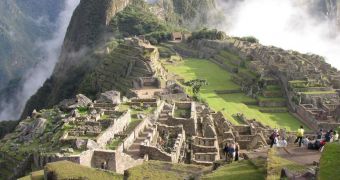Forget about the Great Pyramid or the Hanging Gardens. Now the top of the Seven Wonders of the World contains The Great Wall of China, Rome's Colosseum, India's Taj Mahal and also three architectural masterworks from Latin America (Peru's Machu Picchu, Brazil's Statue of Christ Redeemer and Mexico's Chichen Itza pyramid) plus Jordan's Petra.
The new top is the result of a global poll released on Saturday based on about 100 million votes by the Internet and cellphone text messages and conducted by the nonprofit organization New7Wonders. The nominees were 14 and the losers are the Eiffel Tower, Easter Island in the Pacific, the Statue of Liberty, the Acropolis, Russia's Kremlin and Australia's Sydney Opera House.
The only surviving structure of the former seven wonders of the ancient world, the pyramids of Giza, kept their status and were added to the new seven after Egyptian officials expressed this was a disgrace they had to compete.
The poll was started in 1999 by the Swiss adventurer Bernard Weber and initially there were about 200 nominations, but the list was shortened to the 21 most-voted by the beginning of 2006. Organizers have recognized there was no foolproof method of impeding people from voting just once for their option.
The announcement of the New Seven Wonders of the World was made on a stadium in Lisbon, Portugal's capital, in front of an audience of 50,000. The most unusual moment of the ceremony was marked by a Peruvian in national costume raising Macchu Picchu's award to the sky and bowing to the audience with his hands clasped.
The Colosseum, the Great Wall, Machu Picchu, the Taj Mahal and Petra have been in the leading position since January, while the Statue of Christ Redeemer got a votes boom recently. Other losers of the contest were Cambodia's Angkor, Spain's Alhambra, Turkey's Hagia Sophia, Japan's Kiyomizu Temple, Russia's Kremlin and St. Basil's Cathedral, Germany's Neuschwanstein Castle, Britain's Stonehenge and Mali's Timbuktu.
New7Wonders has as the main goal to boost cultural diversity by helping, preserving and restoring monuments. It is funded through private donations and selling broadcasting rights. The former seven wonders were concentrated in the Mediterranean and Middle East and was made by ancient Greeks like Antipater of Sidon (2nd century B.C.): the Hanging Gardens of Babylon, the Statue of Zeus at Olympia, the Temple of Artemis at Ephesus, the Mausoleum of Halicarnassus, the Colossus of Rhodes and the Pharos lighthouse of Alexandria.

 14 DAY TRIAL //
14 DAY TRIAL //